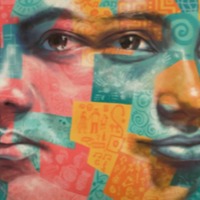
Grizelda
There are an estimated 155,000 people living in modern slavery in South Africa (GSI 2018). South Africa remains a source, transit and destination country for men, women and children subjected to forced labour and sex trafficking. South African children were recruited from poor, rural areas to urban centres, such as Johannesburg, Cape Town, Durban, and Bloemfontein, where girls were subjected to sex trafficking and domestic servitude and boys are forced to work in street vending, food service, begging, criminal activities, and agriculture. Local criminal rings organized child sex trafficking, Russian and Bulgarian crime syndicates facilitated trafficking within the Cape Town commercial sex industry, and Thai and Chinese nationals often organized the sex trafficking of Asian men and women. Nigerian syndicates dominated the commercial sex industry in several provinces. To a lesser extent, syndicates recruited South African women to Europe and Asia, where some are forced into prostitution, domestic servitude, or drug smuggling. Grizelda Grootboom was 18 years old when a trip to Johannesburg with a friend ended in her being trafficked in Yeoville. She was tied up in a room for two weeks and forced to work as a prostitute. Grizelda now works for Embrace Dignity, advocating to prevent violence against women, commercial and sexual exploitation and human trafficking.
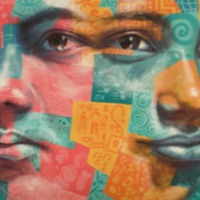
Katia
There are an estimated 509,000 people living in modern slavery in Turkey (GSI 2018). As a source, transit and destination location for immigration, human trafficking is prevalent in the country. Trafficking victims in Turkey are primarily from Central and South Asia, Eastern Europe, Azerbaijan, Indonesia, Morocco, and Syria. Women are mainly trafficked to Turkey as sex workers. Katia was trafficked into commercial sexual exploitation from Ukraine to Turkey. She was drugged and beaten and forced to sleep with men against her will on a daily basis.
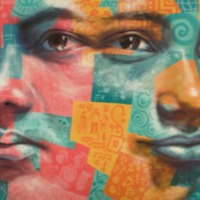
Leann
There are an estimated 17,000 people living in conditions of slavery in Canada (GSI 2018). Both Canadian and foreign citizens are exploited in forced labour and sex trafficking. Forced labour affects migrant workers under ‘low-skilled’ temporary visa streams including the low-wage and primary agricultural streams. These workers are often in restaurants, hotels, agriculture, food preparation, construction or domestic work. Sexual exploitation of Canadian citizens is the most common form of slavery detected by authorities in the country, with 93% of sex trafficking victims being Canadian. Leann developed an addiction issue after a serious industry left her in a wheelchair. She borrowed money to feed her addiction that resulted in her owing money to her traffickers, who forced her into forced criminal activity to pay off her debt. Leanna was forced to open bank accounts, assume fake identities and have multiple IDs to get money for her traffickers. Though she was arrested on a number of occasions, her traffickers were always waiting for her outside jail when she was released. This cycle continued for three years until her traffickers suspected she had stolen from them and locked her in a room where she was sexual and physical abused. She was finally able to escape when one day someone left the door open and she was helped by a passerby.
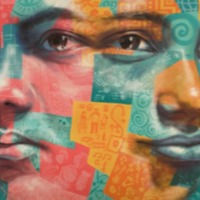
Kat Rosenblatt
There are an estimated 403,000 people living in modern slavery in the United States (GSI 2018). Sex trafficking exists throughout the country. Traffickers use violence, threats, lies, debt bondage and other forms of coercion to compel adults and children to engage in commercial sex acts against their will. The situations that sex trafficking victims face vary, many victims become romantically involved with someone who then forces them into prostitution. Others are lured with false promises of a job, and some are forced to sell sex by members of their own families. Victims of sex trafficking include both foreign nationals and US citizens, with women making up the majority of those trafficked for the purposes of commercial sexual exploitation. In 2015, the most reported venues/industries for sex trafficking included commercial-front brothels, hotel/motel-based trafficking, online advertisements with unknown locations, residential brothels, and street-based sex trafficking. Kat Rosenblatt grew up in an abusive home in South Florida. After her mother left her father and too Kat to a hotel, Kat was befriended by a young girl who over the course of a month groomed her into sex tourism. The first time Kat Rosenblatt’s traffickers attempted to sell her to an older man, she resisted and was left for dead in the street. Though she was able to escape this situation, Kat was trafficked again by a friend’s father who later planted drugs in her school bag. Kat was suspended and became a drug addict. However, after overcoming her addictions, Kat obtained a PhD, wrote a book about her experience and founded her organisation There Is Hope For Me.
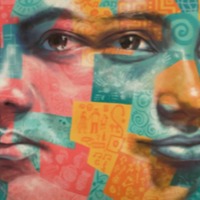
Gaby
There are an estimated 403,000 people living in modern slavery in the United States (GSI 2018). Sex trafficking exists throughout the country. Traffickers use violence, threats, lies, debt bondage and other forms of coercion to compel adults and children to engage in commercial sex acts against their will. The situations that sex trafficking victims face vary, many victims become romantically involved with someone who then forces them into prostitution. Others are lured with false promises of a job, and some are forced to sell sex by members of their own families. Victims of sex trafficking include both foreign nationals and US citizens, with women making up the majority of those trafficked for the purposes of commercial sexual exploitation. In 2015, the most reported venues/industries for sex trafficking included commercial-front brothels, hotel/motel-based trafficking, online advertisements with unknown locations, residential brothels, and street-based sex trafficking. Gaby was suffering from drug and alcohol addiction when she posted an ad online to find a job in modelling or web-camming. Her ad was answered by a college professor who rented an apartment for her and other women to stay in where men would come in to purchase sex. Gaby was afraid to leave because her trafficker had all of her information. He had her ID, her social security card, and he knew where she lived. Gaby was in a controlled environment where she was allowed to leave. She always went back because she was afraid of what would happen if she didn't. One day she found a church, went inside, and wrote a suicide note on a prayer card. The church's female pastor found the note and tracked down Gaby. The pastor told her to not go back and she gave Gaby a place to stay in her family's home. Gaby never went back, she went to rehab and became part of Wellspring Living Program for young girls and women who have been trafficked. She now supports herself with a government job and is raising her 8-year old son.
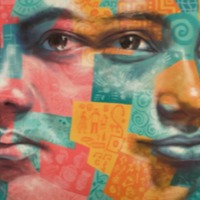
Terry Forliti
There are an estimated 403,000 people living in modern slavery in the United States (GSI 2018). Sex trafficking exists throughout the country. Traffickers use violence, threats, lies, debt bondage and other forms of coercion to compel adults and children to engage in commercial sex acts against their will. The situations that sex trafficking victims face vary, many victims become romantically involved with someone who then forces them into prostitution. Others are lured with false promises of a job, and some are forced to sell sex by members of their own families. Victims of sex trafficking include both foreign nationals and US citizens, with women making up the majority of those trafficked for the purposes of commercial sexual exploitation. In 2015, the most reported venues/industries for sex trafficking included commercial-front brothels, hotel/motel-based trafficking, online advertisements with unknown locations, residential brothels, and street-based sex trafficking. A series of traumatic events lead to a 30-year drug addiction for Terry Forliti. After her addiction lead to the breakdown of an abusive marriage, Terry found herself on the streets. She met a man who would eventually become her pimp and force her into prostitution for the next five years. Terry was eventually arrested and while spending time in jail was introduced to the Breaking Free organization who offered a housing programme to poor mothers trapped in prostitution. Terry spent three years in the programme, obtained a BA and began working for the organization helping others who had been through similar experiences
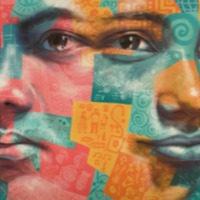
Alice
There are an estimated 403,000 people living in modern slavery in the United States (GSI 2018). Sex trafficking exists throughout the country. Traffickers use violence, threats, lies, debt bondage and other forms of coercion to compel adults and children to engage in commercial sex acts against their will. The situations that sex trafficking victims face vary, many victims become romantically involved with someone who then forces them into prostitution. Others are lured with false promises of a job, and some are forced to sell sex by members of their own families. Victims of sex trafficking include both foreign nationals and US citizens, with women making up the majority of those trafficked for the purposes of commercial sexual exploitation. In 2015, the most reported venues/industries for sex trafficking included commercial-front brothels, hotel/motel-based trafficking, online advertisements with unknown locations, residential brothels, and street-based sex trafficking. Alice was trafficked into commercial sexual exploitation in 1999 in Nebraska. She talks about the importance of education for the prevention of trafficking and teaching police and medical staff how to treat people who have been trafficked. Alice also stresses the importance of safe houses, ensuring women who have been trafficked have a safe place to go and available support.
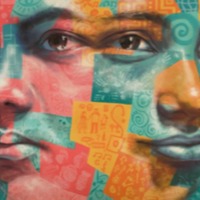
Tina B
There are an estimated 403,000 people living in modern slavery in the United States (GSI 2018). Sex trafficking exists throughout the country. Traffickers use violence, threats, lies, debt bondage and other forms of coercion to compel adults and children to engage in commercial sex acts against their will. The situations that sex trafficking victims face vary, many victims become romantically involved with someone who then forces them into prostitution. Others are lured with false promises of a job, and some are forced to sell sex by members of their own families. Victims of sex trafficking include both foreign nationals and US citizens, with women making up the majority of those trafficked for the purposes of commercial sexual exploitation. In 2015, the most reported venues/industries for sex trafficking included commercial-front brothels, hotel/motel-based trafficking, online advertisements with unknown locations, residential brothels, and street-based sex trafficking. Tina was trafficked into commercial sexual exploitation in the state of Nebraska. Here she talks about the role that drugs play in trafficking women in the state, and how their lives are affected even after they have escaped.
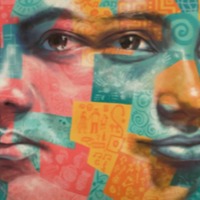
Vicky
There are an estimated 403,000 people living in modern slavery in the United States (GSI 2018). Sex trafficking exists throughout the country. Traffickers use violence, threats, lies, debt bondage and other forms of coercion to compel adults and children to engage in commercial sex acts against their will. The situations that sex trafficking victims face vary, many victims become romantically involved with someone who then forces them into prostitution. Others are lured with false promises of a job, and some are forced to sell sex by members of their own families. Victims of sex trafficking include both foreign nationals and US citizens, with women making up the majority of those trafficked for the purposes of commercial sexual exploitation. In 2015, the most reported venues/industries for sex trafficking included commercial-front brothels, hotel/motel-based trafficking, online advertisements with unknown locations, residential brothels, and street-based sex trafficking. Vicky was trafficked into commercial sexual exploitation in the state of Nebraska. She talks about the role drugs played in her trafficking and the importance of listening to those who have experienced trafficking.
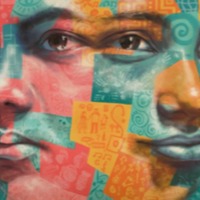
E.R.
There are an estimated 145,000 people liing in conditions of modern slavery in Italy (GSI 2018). Italy is a destination, transit, and source country for women, children, and men subjected to sex trafficking and forced labour. Victims originate from Nigeria, Romania, Morocco, China, and other countries. Female victims are often subjected to sex trafficking in Italy after accepting promises of employment as dancers, singers, models, restaurant servers, or caregivers. Romanian and Albanian criminal groups force Eastern European women and girls into commercial sex. E.R. was 15 when she was forced to marry a man she did not know over twice her age. After leaving her forced marriage, she was disowned by her family and forced into prostitution in Italy by a man she believed loved her. E.R. was subjected to rape and beatings daily before she was rescued by a friend and taken back to Albania. However, E.R. has been unable to leave prostitution in her attempts to look after her son.
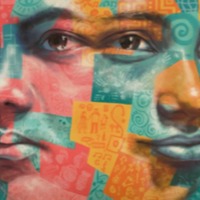
Joanna
There are an estimated 403,000 people living in modern slavery in the United States (GSI 2018). Sex trafficking exists throughout the country. Traffickers use violence, threats, lies, debt bondage and other forms of coercion to compel adults and children to engage in commercial sex acts against their will. The situations that sex trafficking victims face vary, many victims become romantically involved with someone who then forces them into prostitution. Others are lured with false promises of a job, and some are forced to sell sex by members of their own families. Victims of sex trafficking include both foreign nationals and US citizens, with women making up the majority of those trafficked for the purposes of commercial sexual exploitation. In 2015, the most reported venues/industries for sex trafficking included commercial-front brothels, hotel/motel-based trafficking, online advertisements with unknown locations, residential brothels, and street-based sex trafficking. Joanna was born in a small town in Europe/ When she was 18 she met a man who said he wanted to marry her. They began seeing each other and Joanna became pregnant. Her boyfriend took Joanna to the United States where their child was born. Unable to read, Joanna was told to sign a piece of paper at the hospital and never saw her child again. She was taken to an apartment building where other young girls like her were being kept. Joanna was forced to provide sexual services, raped multiple times a day. She was finally able to escape one day when she became ill.
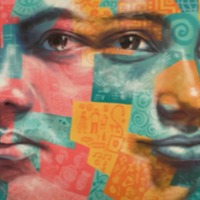
Ram
There are an estimated 610,000 people living in conditions of modern slavery in Thailand (GSI 2018). The country is a source, destination and transit country for men, women and children subjected to forced labour and sex trafficking. Thailand’s commercial sex indusrty remains vast, increasing vulnerabilities for sex trafficking. Children are victims of sex trafficking in brothels, massage parlours, bars, karaoke lounges, hotels and private residences. People are trafficked from other Southeast Asian countries, Sri Lanka, Russia, Uzbekistan and some African countries. It is also a transit country for people from China, North Korea, Bangladesh, India and Burma. Ram ran away from an abusive home and was forced to live on the streets. One day while stealing food from a local market, Ram was kidnapped by a street gang. Ram was forced to steal from tourists during the day and at night was sold for sex to older men. Ram’s exploitation finally came to an end when his trafficker was arrested.
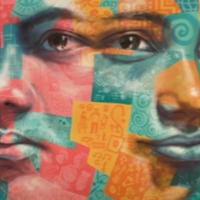
Romina
Countries in Latin America are source, transit and destination countries for trafficking in persons. People are exploited within their own countries and trafficked to other countries in the region, with Latin America being the primary source region for people trafficked to the United States. Major forms of trafficking in persons include commercial sexual exploitation of women and children, labour trafficking within national borders and among countries in the region, and the trafficking of illegal immigrants in Mexico and Central America. The two countries in Latin America and the Caribbean with the largest percentages of their population subjected to modern slavery, are Haiti and the Dominican Republic, according to the Walk Free Foundation. Romina was living on the streets with her father from the age of 9. One day her father was killed and Romina was put into the care of his friend Hugo. From the age of 13, Hugo trafficked Romina into commercial sexual exploitation. Romina was drugged and subjected to daily sexual violence until one day she was rescued during a police raid.
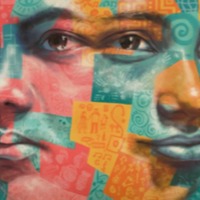
Flora
There are an estimated 403,000 people living in modern slavery in the United States (GSI 2018). Sex trafficking exists throughout the country. Traffickers use violence, threats, lies, debt bondage and other forms of coercion to compel adults and children to engage in commercial sex acts against their will. The situations that sex trafficking victims face vary, many victims become romantically involved with someone who then forces them into prostitution. Others are lured with false promises of a job, and some are forced to sell sex by members of their own families. Victims of sex trafficking include both foreign nationals and US citizens, with women making up the majority of those trafficked for the purposes of commercial sexual exploitation. In 2015, the most reported venues/industries for sex trafficking included commercial-front brothels, hotel/motel-based trafficking, online advertisements with unknown locations, residential brothels, and street-based sex trafficking.Flora was trafficked in to prostitution at the age of 14 when she ran away from home after her mother committed suicide. She left with who she thought was her boyfriend, however within a week he had trafficked her to a different state and she was forced to provide sexual services.
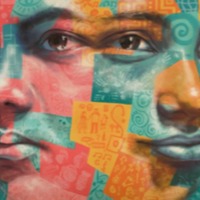
Rachel (Narrative 2)
There are an estimated 403,000 people living in modern slavery in the United States (GSI 2018). Sex trafficking exists throughout the country. Traffickers use violence, threats, lies, debt bondage and other forms of coercion to compel adults and children to engage in commercial sex acts against their will. The situations that sex trafficking victims face vary, many victims become romantically involved with someone who then forces them into prostitution. Others are lured with false promises of a job, and some are forced to sell sex by members of their own families. Victims of sex trafficking include both foreign nationals and US citizens, with women making up the majority of those trafficked for the purposes of commercial sexual exploitation. In 2015, the most reported venues/industries for sex trafficking included commercial-front brothels, hotel/motel-based trafficking, online advertisements with unknown locations, residential brothels, and street-based sex trafficking.Rachel became involved in drug abuse at a young age. Her trafficker used her addiction and threats against her friends and family to force her in to prostitution.
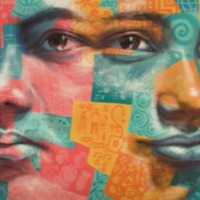
Snow White
There are an estimated 610,000 people living in conditions of modern slavery in Thailand (GSI 2018). Labour trafficking victims are often exploited in commercial fishing and related industries, the poultry industry, manufacturing, agriculture, and domestic work, or forced into street begging. Corruption continues to undermine anti-trafficking efforts. Some government officials are directly complicit in trafficking crimes, including through accepting bribes or loans from business owners and brothels where victims are exploited. Snow White was forced to work at a cannabis farm in Thailand. She was locked in the house with her food restricted and no access to showering facilities.
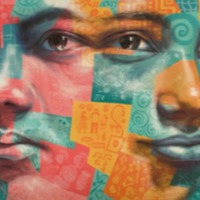
Terry
There are an estimated 403,000 people living in modern slavery in the United States (GSI 2018). Sex trafficking exists throughout the country. Traffickers use violence, threats, lies, debt bondage and other forms of coercion to compel adults and children to engage in commercial sex acts against their will. The situations that sex trafficking victims face vary, many victims become romantically involved with someone who then forces them into prostitution. Others are lured with false promises of a job, and some are forced to sell sex by members of their own families. Victims of sex trafficking include both foreign nationals and US citizens, with women making up the majority of those trafficked for the purposes of commercial sexual exploitation. In 2015, the most reported venues/industries for sex trafficking included commercial-front brothels, hotel/motel-based trafficking, online advertisements with unknown locations, residential brothels, and street-based sex trafficking. Terry was sexually abused at the age of 15 by her boss, an event that she pinpoints as the seed from which her problems began. That same year she suffered a number of other traumas that led to the beginning of her cocaine use. 10 years later, married with children, Terry’s drug use became out of control and she lost custody of her children and ended up on the streets. Within two months of this, she found herself trafficked in to a life of prostitution. Here Terry, now executive director of the survivor led organization Breaking Free tells of the environment in which many women subjected to forced prostitution grow up in, describes who it is that sets the demand for prostitutes, and tells of the warning signs among children vulnerable to trafficking.
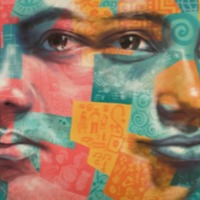
Leah Albright-Byrd
There are an estimated 403,000 people living in modern slavery in the United States (GSI 2018). Sex trafficking exists throughout the country. Traffickers use violence, threats, lies, debt bondage and other forms of coercion to compel adults and children to engage in commercial sex acts against their will. The situations that sex trafficking victims face vary, many victims become romantically involved with someone who then forces them into prostitution. Others are lured with false promises of a job, and some are forced to sell sex by members of their own families. Victims of sex trafficking include both foreign nationals and US citizens, with women making up the majority of those trafficked for the purposes of commercial sexual exploitation. In 2015, the most reported venues/industries for sex trafficking included commercial-front brothels, hotel/motel-based trafficking, online advertisements with unknown locations, residential brothels, and street-based sex trafficking. Leah ran away from home when she was 14 years old. She went to live her drug dealer in Sacremento who soon forced her to ‘contribute to the household’ by providing sexual services. Leah was in the life for four years before she was able to escape. She speaks of the role faith has had in enabling her to work through her trauma.
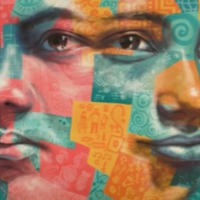
Neelam
The Global Slavery Index 2018 estimates that on any given day there were nearly 8 million people living in modern slavery in India. The GSI 2018 reports an emerging trend in northeast India where organised trafficking syndicates operate along the open and unmanned international borders, duping or coercing young girls seeking employment outside their local area in to forced sexual exploitation. Many women and girls are lured with the promise of a good job but then forced in to sex work, with a 'conditioning' period involving violence, threats, debt bondage and rape. Neelam was 12 years old when she was kidnapped and sold to a brothel.
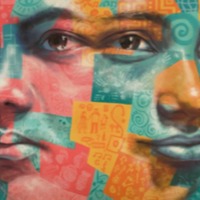
Christi
There are an estimated 403,000 people living in modern slavery in the United States (GSI 2018). Sex trafficking exists throughout the country. Traffickers use violence, threats, lies, debt bondage and other forms of coercion to compel adults and children to engage in commercial sex acts against their will. The situations that sex trafficking victims face vary, many victims become romantically involved with someone who then forces them into prostitution. Others are lured with false promises of a job, and some are forced to sell sex by members of their own families. Victims of sex trafficking include both foreign nationals and US citizens, with women making up the majority of those trafficked for the purposes of commercial sexual exploitation. In 2015, the most reported venues/industries for sex trafficking included commercial-front brothels, hotel/motel-based trafficking, online advertisements with unknown locations, residential brothels, and street-based sex trafficking. Christi became addicted to drugs while in high school. Though she went to rehab at the age of 18, after leaving her drug abuse continued. One day, her boyfriend told her that she would have to prostitute herself to get them drugs. Even after leaving this man, she met another who took her to Memphis and forced her to provide sexual services, using her addiction as a form of control. Christi states that when she got arrested, she hit rock bottom and called her mom to help her get out of the situation. Christi is now a wife and mother active in her church and community. She supports the local drug court as a mentor and speaks publicly about sex trafficking and awareness.